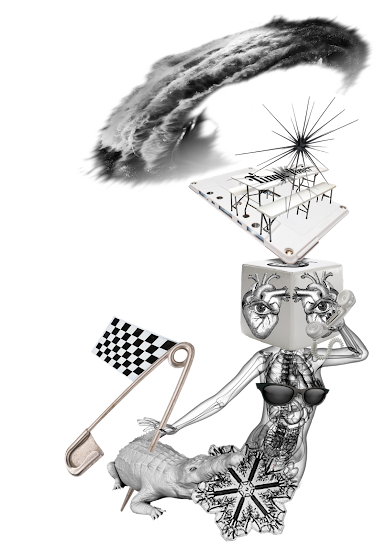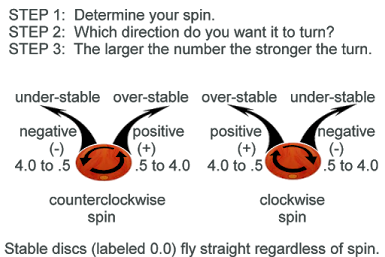← chapter 1
“Where did I leave off?”
“The bronzed, buxom, lass gazing back toward...”
“Ahh, yes...the eye is guided toward an undulating panel of graffiti—good-ugly public art—floating along the left extremity of
Untitled Portrait of Self. The letters don’t coalesce into clear words (standard for street art) and don’t seem to be painted on a wall; instead, the alphabet-curtain is apparently blowing in the wind. Jangling wind chimes in the top-most corner add to this suggestion of motion.
“Two figures inhabit the middle-ground behind the leg and in front of the water’s edge: a study for
Edward Degas' sculpture, Little Dancer of Fourteen Years and a donkey-zebra...”
“Before the graffiti gets too far in the rearview, could you tell me how to differentiate between good-ugly public art and bad-ugly vandalism?”
“Context and intent. The difference between the staccato bark of a neighbor’s dog incessantly echoing off dark alley walls and a wolf’s howl rising and falling on the moonlit shadows of the wind. Both wake you up. One disrupts much-needed rest before another day of drudgery and the other opens your eyes reminding you that an entire universe continues unabated while you slumber.”
“A nice analogy, but could you spell it out in more simple and direct terms?”
“A vandal gets a dump of adrenaline when committing a crime of spontaneity and not getting caught, and—later—re-lives that rush when witnessing his results in the light of day (sotospeak). There’s also an element of ‘pay attention to me’ and an enjoyment/expectation that the damage will cause negative reactions. The adrenaline-part is no different for street artists, but they spend m
xm effort, time, and money in design, planning, and preparation compared to the amount they spend during the execution phase and negative reactions are rarely, if ever, their goal.”
“Got it. Thanks. Back to...”
“...the zonkey looking back at us. A visual metaphor for my
cat, a lynx-point Siamese and striped tabby (mixing causes good traits to dominate). When a two-dimensional image is depicted staring directly at the viewer, the intent of the artist is similar to a writer’s paragraph break; to cause the viewer to pause, look inward for a moment, and contemplate (here, I’m anthropomorphizing...as all pet owners do...the pony is really scanning the shoreline along both its flanks. It is, however, listening ahead to both the crackle of the campfire and the tinkle of the wind chimes).
“I want the viewer to wonder what distant object could draw the diminutive teenaged dancer’s attention away from a nearby, cute, young animal. So they follow her line of sight and see she is focusing on a large .38 caliber revolver pointed in her direction (the second of three sidearms I carried; the first a .45, the last a 9mm).
“The hand holding the revolver doesn’t have its finger on the trigger and—clearly—the gun is inoperative because its barrel contains a large, defoliated branch (suggesting winter or that the branch is dead...this rocky beach’s winter is June through August).
“If I have a real dream with a gun in it, people rarely bleed when shot and never fall down and die. My subconscious is stuck in the realm of backyard cops and robbers; one common denominator (no matter how many thousands of gory video game and film deaths my brain could reference) is me having to say:
lie down, I shot you, you’re dead. In my career, I had to point my weapon at a small number of people whom I was arresting and, in every one of those cases, I never needed to put my finger on the trigger. So didn’t.
“I have a theory: Humans grow to identify their true self from a lifetime of partially remembered dream images. Those fragmented slivers of subconscious, pasted together with cobwebs, are the makings of their deeply buried taproots.
“Hanging below the branch is an image showing the interior of a human lung next to a leaf; below the lung is an image showing the interior of a human testicle next to an acorn. No subtlety, I know, but I was trying for some visual humor: the bronzed buxom lass immediately below could be flinching away from the low hanging fruit...as it were.”
“I get the pun.”
“Walking along the branch, a small, extremely strong, hairy-humpbacked dogman caricature (common sense) is swinging a huge butterfly net over its head in order to catch an inordinately svelte woman dressed in lingerie (intuition) who’s gently double-pushing the arm grasping the treelimb-gun. Neither common sense nor intuition are aware how close the net is. She doesn’t know because her eyes are closed and he never knows because the staff of his net pierces through the moon, which (because of proximity) blocks his view.
“Common sense and intuition are constantly vying to guide my decisions, while my conscience—the three-eyed evil mickey sun—is so rarely needed for consultation that its untroubled countenance floats outside the upper pane of
Marcel Duchamp’s Fresh Window. I understand that for many other people, their inner-angel constantly wrestles with their inner-daemon (which, I theorize, are the self-same people who routinely have/remember their nightmares and have become enured to their inner-terrible). This is pertinent because it relates to other details (which I'll explain in a later chapter).
“The window placement and size (relative to the chair) is intended to reinforce the layout of the
Bedroom In Arles by Van Gogh (discussed in the
previous chapter).
“A string from the wind chimes is attached to the point of an umbrella (golf umbrella? beach umbrella?..no matter...I neither golf or beach on windy days). The umbrella’s pole is hidden behind, or stuck into, the back of the moon (either way, the perspective showing the underside of the umbrella indicates height). Next to the umbrella, the extreme up-shot of a nude woman walking toward the viewer reinforces this height-impression and, like the zonkey, she stares directly back at the viewer.”
“Good bookends. I'll bet that brings this chapter to a close.”
“Don’t mind if I do—thanks for playing. For being such a great listener, there will be cake at the end.
“So once the shy skinnydipper skips out of the surf, to warm her exceptionally pert breasts by the fire, her visage will pass under the dogman's limb; he will glance down, snag his net on the window latch, open the pane, and permit the underwater ocean waves (with the appearance of thunderclouds) to wash away all the acidophilus bacteria (which looks like cactus-trees) culminating in an upset stomach, farts loud enough for the moon to hear, and the heart-shape hands typing the next chapter of the story in, on, behind, adjacent, and surrounding the head and left arm of
Untitled Portrait of Self.
chapter 3 →





















































